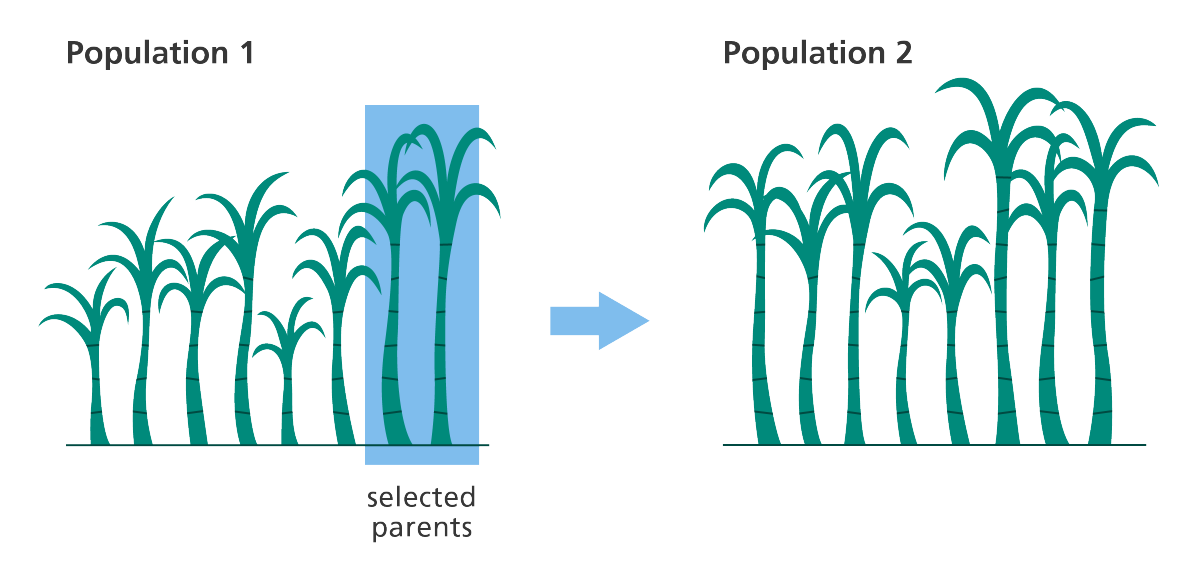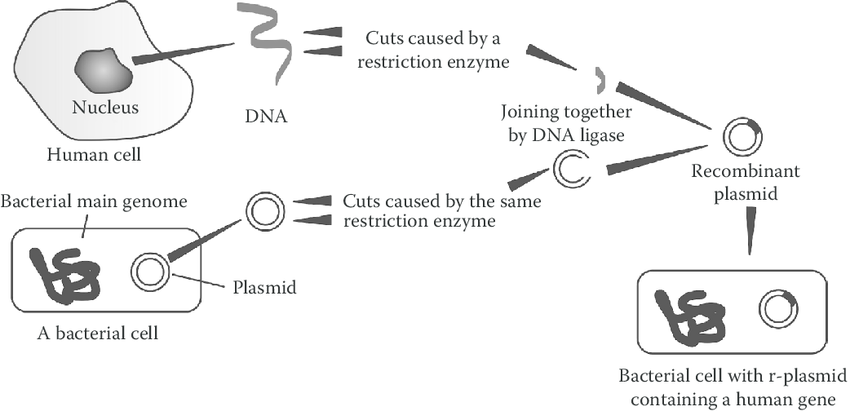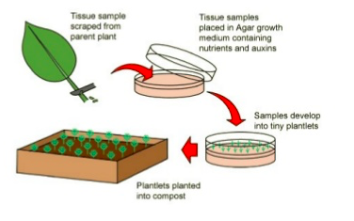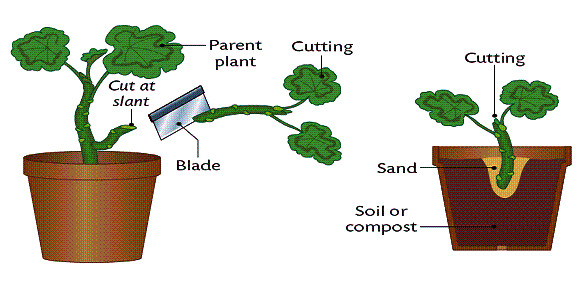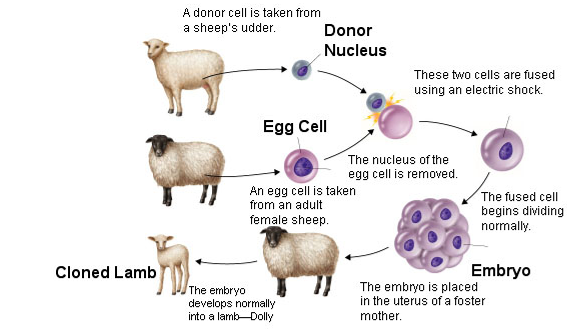Genetic Modification
Selective Breeding
Selective breeding is a method used to improve crop and livestock yield that is becoming increasingly popular, as it allows people to create species with desirable characteristics. People need to decide which is the desirable characteristic. Then they would choose parents that display these desirable characteristics, and they would use them to produce the next generation. This process will be repeated.
Impact on plants:
- Wheat plants may now produce more grain
- Food quality may be enhanced
- Juicier, bigger vegetables and fruits - makes it more marketable
- Disease resistance
Impact on animals:
- Cows producing more milk
- Chickens producing larger eggs
- Creating domestic dogs with a gentle nature
However, plants and animals that have been created through selective breeding share similar genes. This means that if a disease strikes, all of these organisms may be whipped out. It can also lead to ‘inbreeding’ where some breeds are particularly prone to disease or inherited defects.
Genetic Engineering
Genetic engineering is the process where scientists modify the genome of an organism in order to introduce desirable characteristics. This diagram explains the main stages of genetic engineering:
- Restriction enzymes are used to cut open DNA at particular places to leave ‘sticky ends’.
- Ligase enzymes are then used to rejoin DNA strands at the ‘sticky ends’.
- Plasmids are the loops of DNA that can be found in the cytoplasm of bacteria. They can pass from one bacterial to another - therefore scientists tend to use them as vectors, as they carry DNA into the bacterium.
Benefits and Risks
| Benefits | Risks |
|
|
Genetically Modified Crops
Crops that have had their genes modified in this way are called genetically modified (GM) crops. GM crops include ones that are resistant to insect attack or to herbicides. GM crops generally show increased yields.
Concerns about GM crops include the effect on populations of wild flowers and insects. Some people feel the effects of eating GM crops on human health have not been fully explored.
Modern medical research is exploring the possibility of genetic modification to overcome some inherited disorders.
Tissue Culture
Tissue culture is a way to clone plants. Scientists would take small pieces of plants, and are grown in vitro using sterile agar jelly. The jelly would contain plant hormones and nutrients that would allow the plant to grow.
| Advantages | Disadvantages |
|
|
Cuttings
Cuttings is an older, but simple, method used by gardeners to produce many identical new plants from a parent plant.
Embryo Transplants
Embryo transplants: splitting apart cells from a developing animal embryo before they become specialised, then transplanting the identical embryos into host mothers.
Adult Cell Cloning
Stages of creating a clone (identical)
- The nucleus is removed from an unfertilised egg cell.
- The nucleus from an adult body cell, such as a skin cell, is inserted into the egg cell.
- An electric shock stimulates the egg cell to divide to form an embryo.
- These embryo cells contain the same genetic information as the adult skin cell.
- When the embryo has developed into a ball of cells, it is inserted into the womb of an adult female to continue its development.
- What is genetic engineering?
- Your answer should include: Process / Scientists / Modify / Genome / Desirable / Characteristics
Explanation: Genetic engineering is a process where scientists modify the genome of an organism in order to introduce desirable characteristics. - Why is selective breeding becoming increasingly popular?
- Your answer should include: Improves / Crop / Livestock / Yield / Desirable / Characteristics
Explanation: It improves crop and livestock yield that have desirable characteristics. - What are plasmids and where can they be found?
- Your answer should include: Loops / DNA / Cytoplasm / Bacteria
Explanation: Plasmids are the loops of DNA that can be found in the cytoplasm of bacteria.
